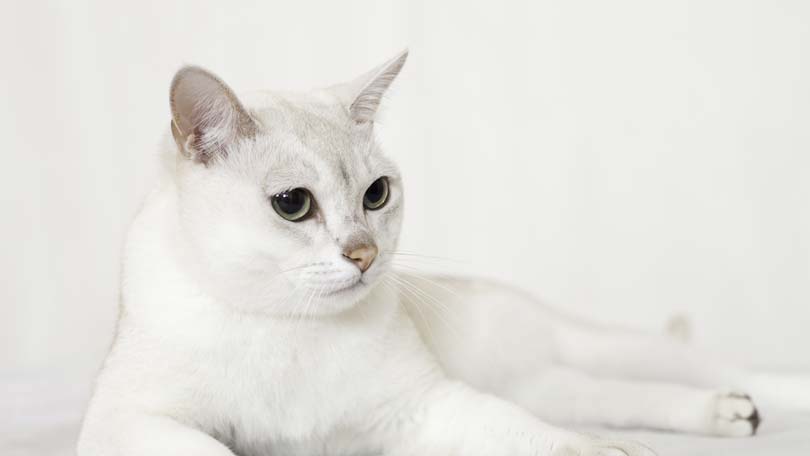
Systemic hypertension (or systemic high blood pressure) is a quite common disorder in humans, but it is infrequently diagnosed in veterinary practice. This is probably due to the difficulties associated with measuring blood pressure in pets, rather than to an actual low prevalence of systemic high blood pressure in cats and dogs. Nevertheless, in last years, the increasing popularity of cats as pets, the prolongation of their mean life-span and the development of valid and reliable measurement instruments for blood pressure have led to a progressively increased finding of hypertension in cats, along with its associated disorders.
Hypertension is defined as a long-standing elevation of systemic arterial pressure beyond the normal levels for a given species. In veterinary literature, opinion is divided about normal blood pressure values in cats. The values reported vary depending on the measurement method used, the possible use of pharmacological containment (sedation) in order to reduce anxiety, fear or excitement of cats, and the behavioral state of the animal. As a general rule, the following range values are considered to be normal in cats: 118-170 mm/Hg for systolic blood pressure and 83-100 mm/Hg for diastolic blood pressure. Hypertension diagnosis is therefore established when systolic and/or diastolic pressure are greater than the upper limit of the normal range (i.e., systolic pressure greater than 170 mm/Hg and/or diastolic pressure greater than 100 mm/Hg) and when, above all, the elevation of blood pressure is confirmed through repeated measurements.
In principle, high blood pressure can be primary in origin (essential hypertension) or secondary to other medical conditions (secondary hypertension). While most human patients are diagnosed with essential (primary) hypertension, in animals the most common form of the disease is secondary hypertension. In particular, systemic high blood pressure in cats is usually associated with chronic kidney disease and hyperthyroidism, two common affections in this species, and sometimes diabetes mellitus.
Being a systemic condition (involving the whole body), hypertension can affect various organs and systems in the body with varying signs and symptoms. Unfortunately, systemic high blood pressure is often asymptomatic at its onset, so it may go undetected for months or even years until tissue damages it causes manifest themselves as dysfunctions and failures of various organs. The organs and/or systems most commonly affected include eyes, heart, kidneys and central nervous system. Ocular signs and symptoms are caused by damage to the inner structures of the eye (particularly retina and choroid) and can include retinal edema, intraocular hemorrhage, retinal detachment followed by blindness with sudden onset. The cardiovascular system responds to high blood pressure by increased wall thickness of the left ventricle of the heart (left ventricular hypertrophy), resulting from the increased workload that the heart must perform to pump blood against the higher arterial pressure. Neurological signs associated with systemic hypertension are caused by brain edema and can include seizures, disorientation, muscular incoordination, progressive stupor and coma. As concerns structural renal damage, it is usually observed only in presence of a pre-existing kidney disease; so, in cats, hypertension and renal disease can give raise to a vicious circle where chronic kidney disease causes systemic high blood pressure which in turn further damages the already diseased kidney function and structure.
Once a diagnosis of systemic hypertension has been established, the treatment plan should be defined on the basis of several factors, including the presumed underlying medical condition, the presence of structural damage, dysfunction and/or failure of target organs, and the degree of increased blood pressure. In most cases the antihypertensive therapy is lifelong and it is usually continued even after the potential underlying cause of hypertension (e.g., renal disease, hyperthyroidism) has been controlled. Its goal is to reduce blood pressure and protect organs from further damage.
Although dietary changes are a cornerstone of hypertension control strategies in humans (in particular salt and calorie restriction), they do not appear to be so effective in pets. Therefore, although the discontinuation of high-sodium diets is always recommended, dietary restrictions cannot be the foundation of an antihypertensive therapy in cats, but only a secondary or ancillary strategy. The treatment of systemic high blood pressure in cats is unavoidably based on the administration of antihypertensive drugs, in particular angiotensin-converting enzyme inhibitors (ACE-inhibitors), calcium channel blockers and, in hypertensive hyperthyroid cats, beta-blockers.
Since pharmacological therapy is usually continued indefinitely, it would be ideal to use a single agent administered once daily by mouth in order to ensure (or at least improve) the owner’s compliance with the treatment schedule. When the response to the initial drug is not adequate, a higher dose can be used or a drug from a different class can be combined with the initial agent. The most common side effects of antihypertensive drugs include anorexia, vomiting and diarrhea, while reduction of blood pressure below normal values is unlikely with oral drug regimes. If treated cats show side effects, the initial drug should be replaced by another agent from a different class. When the owner strictly adheres to the treatment plan prescribed for his pet and the underlying cause of hypertension is adequately managed, the antihypertensive therapy is generally effective and capable to control the condition. Only in this way it is possible to prevent or slow the progression of organ damage caused by a long-standing elevation of blood pressure which, if not treated, can result in multi-organ failure and potentially life-threatening consequences.
